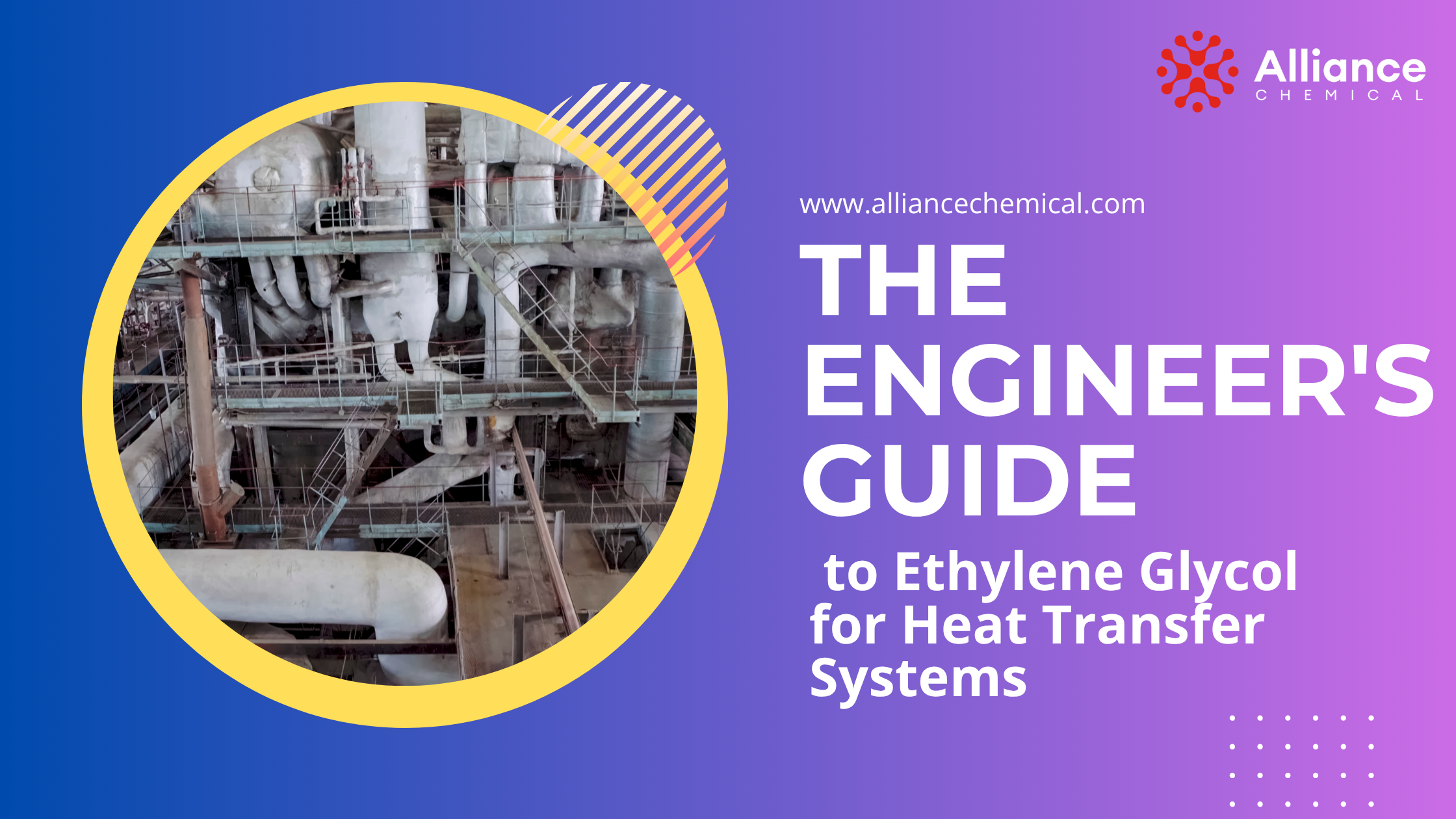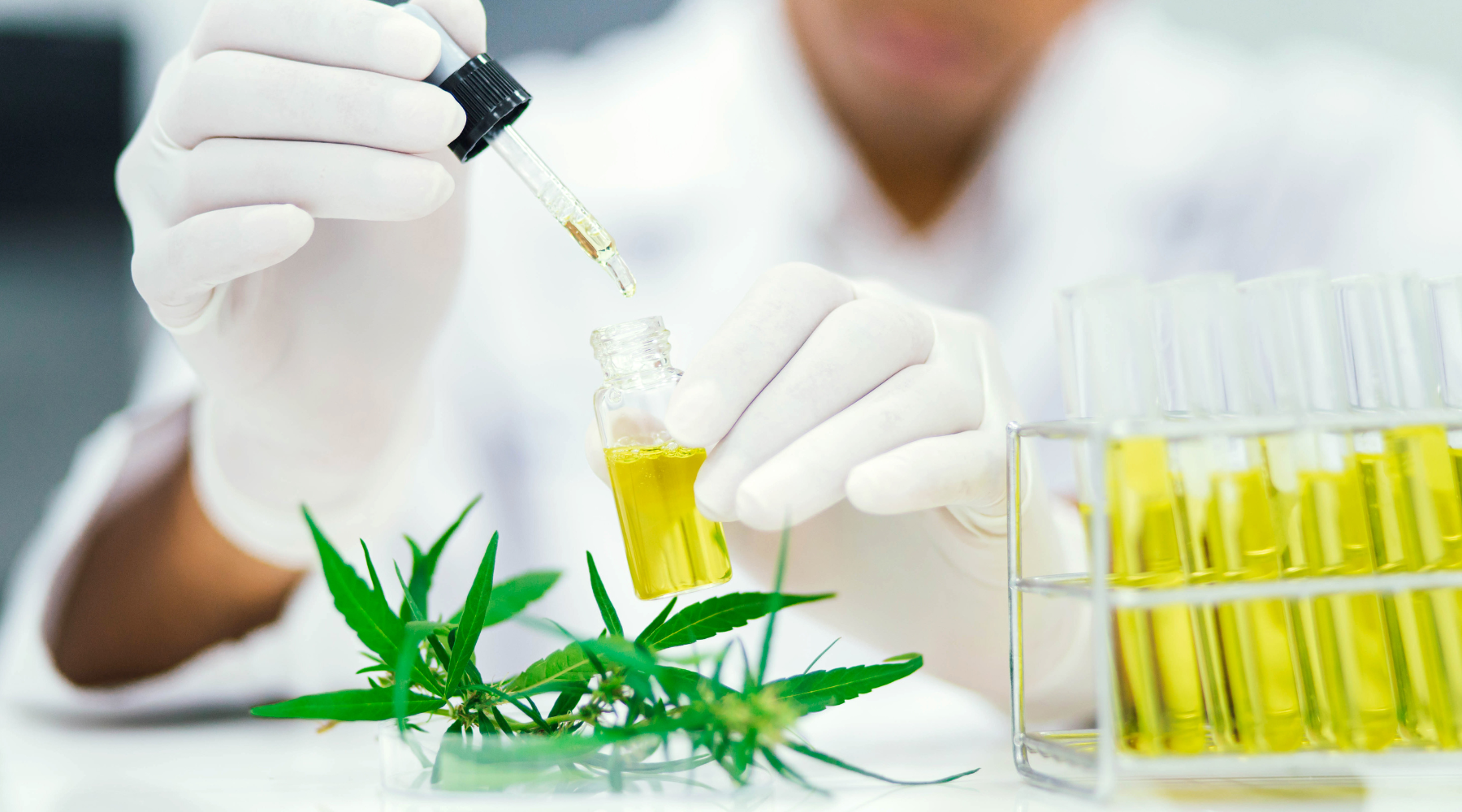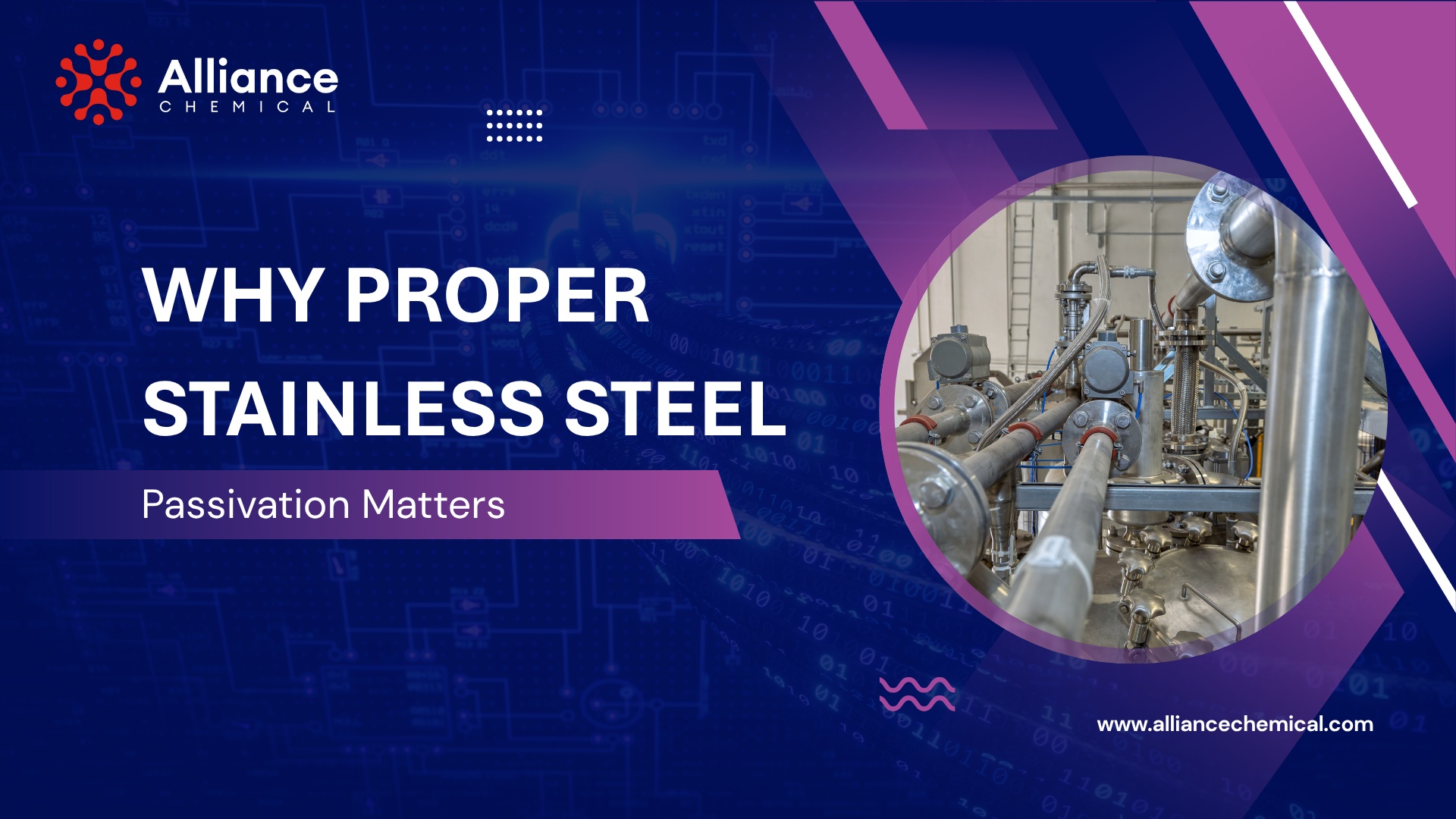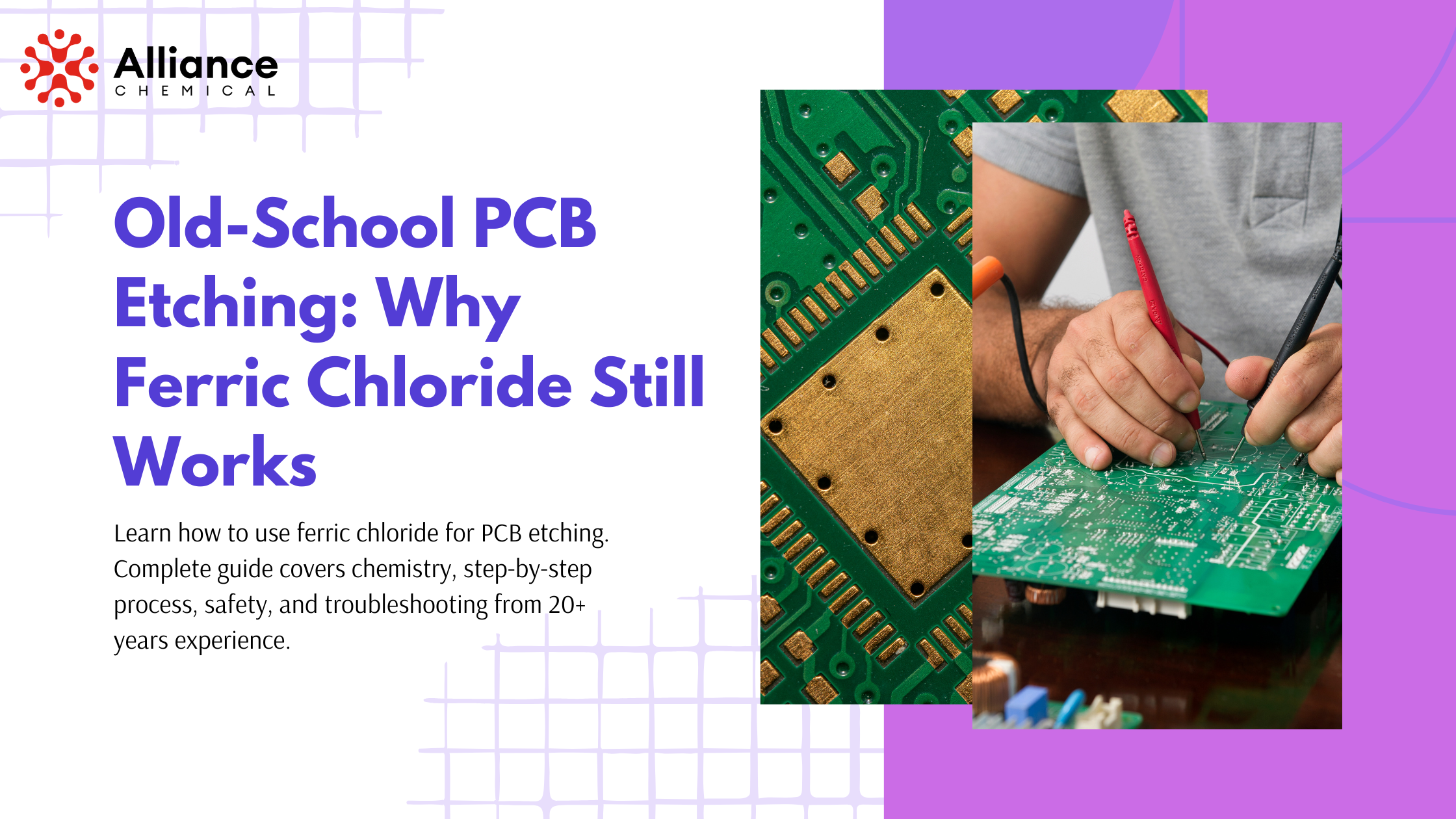
The Engineer's Guide to Ethylene Glycol for Heat Transfer Systems
Table of Contents
Summary
It was a Monday morning when the facilities manager called about $40,000 in freeze damage. After 20+ years supplying industrial glycol systems, we've learned that proper selection goes far beyond just preventing freezing. This comprehensive guide covers concentration selection, pump sizing corrections, heat transfer calculations, and maintenance requirements that every engineer needs to know when designing or converting ethylene glycol-based cooling systems.
After 20+ years supplying industrial facilities, here's what every engineer needs to know about selecting, sizing, and maintaining ethylene glycol-based cooling systems.
Why Water Alone Isn't Enough
It was a Monday morning in January when the facilities manager called. Their weekend had turned into a crisis—a water-cooled chiller system had frozen during an unexpected cold snap, causing $40,000 in burst pipes and damaged equipment. The system had been "temporarily" shut down for maintenance, and nobody anticipated temperatures would drop below freezing.

"We thought we'd restart it before it got too cold," he explained. "We were wrong."
This scenario plays out more often than it should. Any heat transfer system using water that might experience temperatures below 32°F (0°C) needs freeze protection. That's where ethylene glycol becomes mission-critical.
⚠ The Real Cost of Freeze Damage
When water freezes, it expands approximately 9%. In a closed piping system, this expansion generates tremendous pressure—enough to crack cast iron pumps, split copper pipes, and destroy expensive heat exchangers. The damage isn't always immediate or obvious. Micro-cracks may only reveal themselves weeks later through slow leaks or reduced system efficiency.
Freeze protection isn't optional—it's insurance against catastrophic system failure.
But freeze protection is just the beginning. Over two decades of supplying ethylene glycol to industrial facilities has taught us that proper selection, concentration, and maintenance of glycol-based systems requires understanding properties that dramatically differ from plain water.
Ethylene Glycol vs. Propylene Glycol: Making the Right Choice
The first question engineers ask: "Should I use ethylene glycol or propylene glycol?" The answer depends entirely on your application.
Ethylene Glycol
Best for:
- HVAC systems
- Industrial cooling
- Closed-loop applications
- When efficiency matters
Advantages:
- Superior heat transfer
- Lower viscosity
- More cost-effective
- Better low-temp protection
Propylene Glycol
Best for:
- Food processing
- Pharmaceutical
- Potable water risk
- Environmentally sensitive
Advantages:
- Non-toxic
- FDA approved (food-grade)
- Safer if leaked
- Less corrosive
⚠ Critical Safety Distinction
Ethylene glycol is toxic if ingested. It should NEVER be used in systems where there's any possibility of contaminating potable water or food processing operations. For those applications, propylene glycol is the only acceptable choice, despite the performance and cost tradeoffs.
However, for standard HVAC and industrial cooling applications with proper containment, ethylene glycol is the industry standard due to its superior thermal performance.
For the remainder of this guide, we'll focus on ethylene glycol—the most common choice for industrial heat transfer systems.
Understanding Freezing Point Depression: Getting the Concentration Right
The primary reason for using ethylene glycol is freeze protection. But here's what many engineers get wrong: more glycol is not always better.

The Freezing Point Curve
| Ethylene Glycol (% by volume) |
Freezing Point °F |
Freezing Point °C |
Typical Application |
|---|---|---|---|
| 20% | 17.8°F | -7.9°C | Mild climate protection |
| 30% | 7.3°F | -13.7°C | Standard HVAC systems |
| 40% | -10.3°F | -23.5°C | Cold climate buildings |
| 50% | -34.2°F | -36.8°C | Industrial refrigeration |
| 60% | -63°F | -52.8°C | Extreme cold applications |
💡 The 50% Sweet Spot
For most industrial applications, 50% ethylene glycol by volume provides the optimal balance of freeze protection (-34°F), cost, and heat transfer performance. This concentration protects to well below typical cold-weather minimums while avoiding the performance penalties of higher concentrations.
Why Not Go Higher?
You might think "more protection is better," but concentrations above 60% actually decrease freeze protection. Here's why:
Pure ethylene glycol freezes at approximately 9°F (-12.8°C). As you add glycol to water, the freezing point drops—but only to a point. The minimum freezing point occurs around 60% glycol. Above that concentration, you're approaching pure glycol's freezing point again, and you're paying performance penalties.

⚠ Over-Concentration Problems
- Reduced heat transfer: Higher glycol concentrations have lower specific heat capacity
- Increased viscosity: Pumping requires more energy, pressure drops increase
- Higher cost: You're paying for glycol that doesn't improve protection
- Potential slush formation: Very high concentrations can form slush rather than freeze solid
The Properties That Matter: Why Glycol Systems Need Different Design
Here's where many engineers make costly mistakes: You cannot simply replace water with a glycol solution without recalculating your system design. The physical properties change dramatically, and those changes impact pump sizing, flow rates, heat exchanger selection, and expansion tank sizing.

1. Specific Heat Capacity (Heat Transfer Performance)
Ethylene glycol solutions have significantly lower specific heat than water. This means they cannot carry as much thermal energy per unit volume.
Example at 80°F (26.7°C):
- Pure water: Specific heat = 1.0 Btu/lb·°F
- 50% ethylene glycol: Specific heat = 0.815 Btu/lb·°F
Impact: To transfer the same amount of heat, you need to circulate approximately 20% more fluid when using a 50% glycol solution compared to water.
💡 The Net Heat Transport Calculation
While specific heat decreases, specific gravity increases with glycol concentration. The net impact is the product of both properties:
Net capacity factor = Specific Heat × Specific Gravity
For 50% ethylene glycol at 80°F:
0.815 × 1.077 = 0.877 (approximately 12% reduction in heat transport per unit volume)
2. Viscosity (Pumping Requirements)
Viscosity dramatically increases with glycol concentration and decreases with temperature. This affects pump selection, pressure drop calculations, and system efficiency.
50% Ethylene Glycol Dynamic Viscosity:
| Temperature | Viscosity (cP) | vs. Water |
|---|---|---|
| 40°F (4.4°C) | 6.5 cP | 6.5× thicker |
| 80°F (26.7°C) | 2.8 cP | 2.8× thicker |
| 120°F (48.9°C) | 1.5 cP | 1.5× thicker |
Impact: At 40°F with 50% glycol, you'll experience approximately 45% higher pressure drop than with water at the same flow rate. Combined with the need for 15-22% higher flow rates, your pump may need to be significantly upsized.
3. Expansion Volume
Glycol solutions have different thermal expansion characteristics than water. This means your expansion tank sizing must be recalculated.
✓ Real-World Example: Expansion Tank Sizing
Consider a heating system with 200 gallons (0.76 m³) of 50% ethylene glycol by mass:
- Installation temperature: 32°F (0°C)
- Operating temperature: 176°F (80°C)
- Density at 32°F: 1090 kg/m³
- Density at 176°F: 1042 kg/m³
Required expansion volume: Approximately 9 gallons (34 liters) or 4.5% of system volume.
Compare this to water, which typically requires about 4% expansion volume. Using a tank sized for water in a glycol system can lead to over-pressurization and safety valve discharge.
System Design Corrections: The Numbers You Need
When converting a water system to ethylene glycol—or designing a new glycol system—use these correction factors.

Flow Rate Increase Required (50% Ethylene Glycol)
| Operating Temperature | Flow Increase Required |
|---|---|
| 40°F (4.4°C) | +22% |
| 100°F (37.8°C) | +16% |
| 140°F (60°C) | +15% |
| 180°F (82.2°C) | +14% |
Pressure Drop Correction (50% Ethylene Glycol)
| Operating Temperature | Pressure Drop Increase (same flow rate) |
Combined Correction (increased flow + viscosity) |
|---|---|---|
| 40°F (4.4°C) | +45% | +114% |
| 100°F (37.8°C) | +10% | +49% |
| 140°F (60°C) | 0% | +32% |
| 180°F (82.2°C) | -6% | +23% |
⚠ Critical Design Error to Avoid
At 40°F, a system designed for water will experience more than double the pressure drop when filled with 50% ethylene glycol at the required higher flow rate. This can lead to:
- Pump cavitation and premature failure
- Insufficient flow to remote zones
- Inability to meet heating/cooling loads
- Excessive energy consumption
Always recalculate pump curves and system head requirements when converting to glycol.
Maintenance and Monitoring: Keeping Your System Protected
Installing ethylene glycol isn't a "set it and forget it" solution. Over time, glycol degrades, concentrations change, and system performance suffers.
Annual Testing is Essential
Every ethylene glycol system should be tested annually for:
- Glycol concentration: Use a refractometer to verify the freeze point protection level hasn't changed due to water addition or evaporation
- pH level: Should remain between 7.5-9.0. Lower pH indicates oxidation and acid formation
- Reserve alkalinity: Measures the glycol's ability to neutralize acids. Should be above 10.0 mL for industrial inhibited glycol
- Visual inspection: Color change (darkening) or cloudiness indicates degradation
⚠ Signs Your Glycol Needs Replacement
- pH drops below 7.0
- Color changes from clear/light yellow to brown or black
- Reserve alkalinity depleted (below 5.0 mL)
- Visible particulates or sludge formation
- Corrosion evidence on system components
Degraded glycol becomes acidic and corrosive, potentially causing more damage than the freeze protection is worth. When glycol degrades, full system replacement is typically required—you cannot simply "top off" with fresh glycol.
Water Quality Matters
One of the most common mistakes we see: filling systems with tap water rather than distilled or deionized water.
Why this matters: Municipal water often contains chlorine, chloramines, and minerals that accelerate glycol degradation and promote corrosion. The chlorine in city water reacts with ethylene glycol's corrosion inhibitors, depleting them rapidly.
Best practice: Always use distilled or deionized water for initial fill and makeup water. The small added cost is nothing compared to replacing degraded glycol or repairing corroded equipment.
Industrial vs. Automotive Grade: Why It Matters
Here's a question we get frequently: "Can I use automotive antifreeze in my HVAC system? It's cheaper."
The answer is a definitive no.
⚠ Never Use Automotive Antifreeze in HVAC Systems
Automotive antifreeze contains silicates designed to protect aluminum engine components. In HVAC and industrial systems, these silicates cause serious problems:
- Fouling: Silicates precipitate out and coat heat exchanger surfaces, dramatically reducing heat transfer
- Pump seal damage: Silicate deposits damage mechanical seals, causing leaks
- Valve problems: Silicate buildup prevents proper valve operation
- Sensor fouling: Temperature and pressure sensors become inaccurate
Industrial-grade ethylene glycol formulations use different corrosion inhibitor packages specifically designed for steel, copper, and brass components found in HVAC systems—without the silicates that cause fouling.
What You Should Use
For industrial heat transfer applications, specify:
- Industrial inhibited ethylene glycol for standard HVAC and process cooling
- ACS reagent grade ethylene glycol for laboratory and pharmaceutical applications requiring documented purity
We supply both formulations with complete documentation including inhibitor package details and material compatibility information.
Real-World Application Examples
Example 1: Rooftop Chiller Freeze Protection
Scenario: A 150-ton rooftop air-cooled chiller serving a data center in Chicago. System holds approximately 400 gallons of fluid.
Solution:
- Concentration selected: 40% ethylene glycol (protects to -10°F, well below Chicago winter minimums)
- Glycol required: 160 gallons ethylene glycol + 240 gallons deionized water
-
System modifications:
- Flow rate increased 18% to maintain cooling capacity
- Pump motor upsized from 5 HP to 7.5 HP to handle increased head
- Expansion tank increased from 30 to 45 gallons
- Annual maintenance: Glycol testing every fall before heating season
Example 2: Snow Melt System
Scenario: Hydronic snow melt system for a hospital emergency entrance. System must remain operational in extreme cold.
Solution:
- Concentration selected: 50% ethylene glycol (protects to -34°F for worst-case scenarios)
-
Design considerations:
- Tubing spacing reduced to account for lower specific heat of glycol solution
- Boiler output increased 15% to compensate for reduced heat capacity
- Flow rates calculated at 40°F worst-case to ensure adequate circulation
- System designed with makeup water deionizer to prevent contamination
About Alliance Chemical
Central Texas Chemical Supplier | 20+ Years Experience
For over two decades, we've supplied ethylene glycol and propylene glycol to industrial facilities, HVAC contractors, and manufacturing operations across the United States. We understand that proper system design starts with the right chemical at the right concentration—and continues with expert guidance on maintenance and troubleshooting.
Whether you need industrial-grade glycol for a 10,000-gallon chiller system or ACS reagent grade for laboratory applications, we provide complete documentation, technical support, and reliable delivery.
Need Ethylene Glycol for Your Heat Transfer System?
Get industrial or ACS grade ethylene glycol with complete documentation, technical support, and fast shipping.
View Products & Get QuoteAvailable in sizes from quarts to totes | Inhibited and non-inhibited formulations









